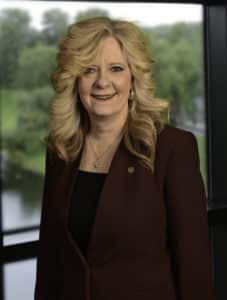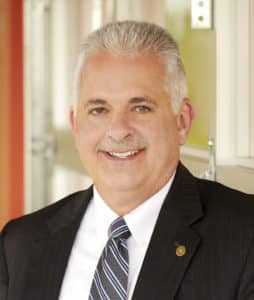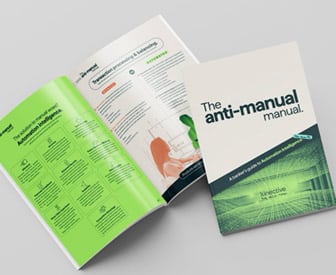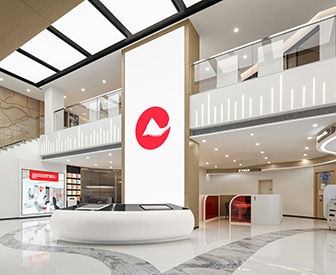One portal to rule them all. That’s what Peapack-Gladstone Bank, Bedminster, N.J., needed.
With a digital onboarding process that was fragmented by redundant and disruptive Know Your Customer (KYC) processes, Peapack’s account-opening process could take days.

Maureen Hemhauser
“It was painful. We have three different lines, retail, commercial and wealth management, and all three were doing KYC different ways,” says Maureen Hemhauser, executive vice president, chief risk officer and head of compliance at Peapack. “You’d open a wealth management account, and then if you went to open a retail account, you’d have to start from the beginning and redo KYC.”
Some seven years ago, Hemhauser reached out to all the vendors Peapack was working with to see if anyone had a solution. But no one did.
Finally, in 2019, Vikar Technologies reached out to Peapack. “They interviewed us and analyzed what we had,” she recalls. “They came back with a diagram that looked like an octopus. Worse — it looked like spaghetti.”
But the next slide in the presentation was a thing of beauty: “one single solution. One portal to keep all of our KYC info.”
Getting there was going to take some doing.
Learn more on KYC practices:
The Ties That Bind

Kevin Runyon
“A big part of the challenge for financial institutions is that many of them are tied to legacy providers, and those core providers don’t tend to move quickly if they don’t have the technology that is needed,” says Kevin Runyon, Peapack’s executive vice president, chief information officer and chief digital officer.
“When you work with a fintech, if they don’t have all that you need, then you need to be able to marry with other fintechs.”
That’s where Vikar’s open-ended platform would come into play. There were still some challenges — not the least of which was Covid — that put the process on hold for nearly two years.

Glenn Bolstad
“We met with Peapack very early in our lives,” says Glenn Bolstad, Vikar CEO and co-founder. “Kevin had some fintech experience, so we speak the same language, which helped. But there was a lot of development work that needed to happen to get there. The benefit of working with us is our ability to tailor a solution to your needs, but they had to take a bit of a leap of faith.”
One of the big goals was eliminating any manual dropouts — points in the process where things couldn’t be handled in the digital space, or snags that would lead to a customer having to start the process over again. There was also a need to understand the differences and similarities of the three lines Peapack sought to maximize.
The key, Bolstad says, was finding the right partners willing and able to work with Vikar. Peapack was already working with TruStage for the compliance piece and Jack Henry is the bank’s core processor.

The New AI: A Banker’s Guide to Automation Intelligence
Manual tasks across channels is costly. And while AI is hot, there’s a simpler way to bring efficiency that many bankers have overlooked.
Read More about The New AI: A Banker’s Guide to Automation Intelligence

Community Bankers’ Top Priorities This Year
CSI surveyed community bankers nationwide to learn their investments and goals. Read the interactive research report for the trends and strategies for success in 2024.
“Banks are a highly regulated business. TruStage is responsible for the documents being proofed for regulation. You can’t do this without that partnership,” Bolstad notes. “On the other end, core providers often look at us as competitors. We were a little surprised that Jack Henry was so open to working with us.”
But being open is a pillar of the Jack Henry brand, according to Lee Wetherington, senior director of the provider’s corporate strategy. “We know we can’t be all things to all people,” he says. “If you recognize that, then the only stance to take is an open one. We have between 800 and 900 third parties that integrate to our ecosystem.”
Vikar COO, CFO and co-founder Adam Bieser agreed. “You have to figure out how to marry all the processes together to make the user experience the best it can be.”
The Ties That Bind

Adam Bieser
In this instance, “best” almost always translates to “fast.”
“The gold standard now is that account opening must be under five minutes, and it must be completely digital,” Wetherington says.
That speed must also be blended with consistency.
“What used to take a good 30 minutes in the branch is now down to 3 minutes, and can be done entirely online, entirely in the branch or a mixture of both,” Runyon says.
“And even though every line opening is different, Vikar allows us to give all of them the same look and feel across all lines. Most important: we only have to run KYC once. It’s a great experience for our employees and an even better experience for our customers.”
Read more: AI Personalization as a Catalyst for Customer Loyalty
Vikar’s platform gathers all the KYC information one time, and it can then be accessed again if other accounts in different lines are opened. The process includes automated scoring with red, green and yellow categories, delineating which accounts are good to go and which ones need additional review.
“If an account gets the red light, it goes to a senior KYC analyst for review,” Ruyon explains. “But there’s still no pulling of documents. It’s all already there in an automated workflow.”
“It allows us to offer enhanced due diligence for our higher-risk clients,” Hemhauser says.
Perhaps one of the biggest barriers to roll out was the human element. “People hate change. It’s painful. It’s scary,” Hemhauser says. “But once our people could really see it, we got incredible feedback.”

Roland Howard
Bolstad agrees. “It was really fun to see people who had been doing it one way for decades, and you can see they were more than a little uneasy. Then weeks later, they become the biggest proponents of it.”
“Best” also means getting it right, preferably the first time.
“When financial institutions want to book loans and take deposits, all of the legal stuff needs to be perfect,” says Roland Howard of TruStage, who added that it is the legal element that causes the most pain. “We allow financial institutions to offload that compliance headache on us. Peapack really wants to be present in all channels.”

Big Changes Mean Big Barriers
Like with any process change — particularly those that impact culture — there are major barriers along the way.
“You have to know your pain points and be willing to take them on,” Hemhauser advises.
Runyon’s advice: “have a vision, and then find a good fintech. If you sit around waiting for your core provider to hand it to you on a silver platter, it’s never going to happen. If you’re afraid to move forward, you will fall behind. You have to understand your shortcomings as a bank and realize that you can’t continue to provide bad service.”
With every generation, the definition of good service is evolving, Wetherington notes. “Forget about being digital — are you prepared to be mobile only? Because that’s where we’re going,” he says.
If banks think they have issues with fragmented systems and information scattered throughout, their customers are likely to face the same challenge. “The average American has 14 financial apps on their phone. We have so much information scattered over so many different apps and providers, we don’t know where we really stand as far as our financial wellness at any given moment,” Wetherington says.
Solving that problem, he suggests, not only helps customers. It can be a major boon to the institution, as well. “When you actually know where you stand financially, you are more likely to take action on a hyper- personalized suggestion made by your bank.”







